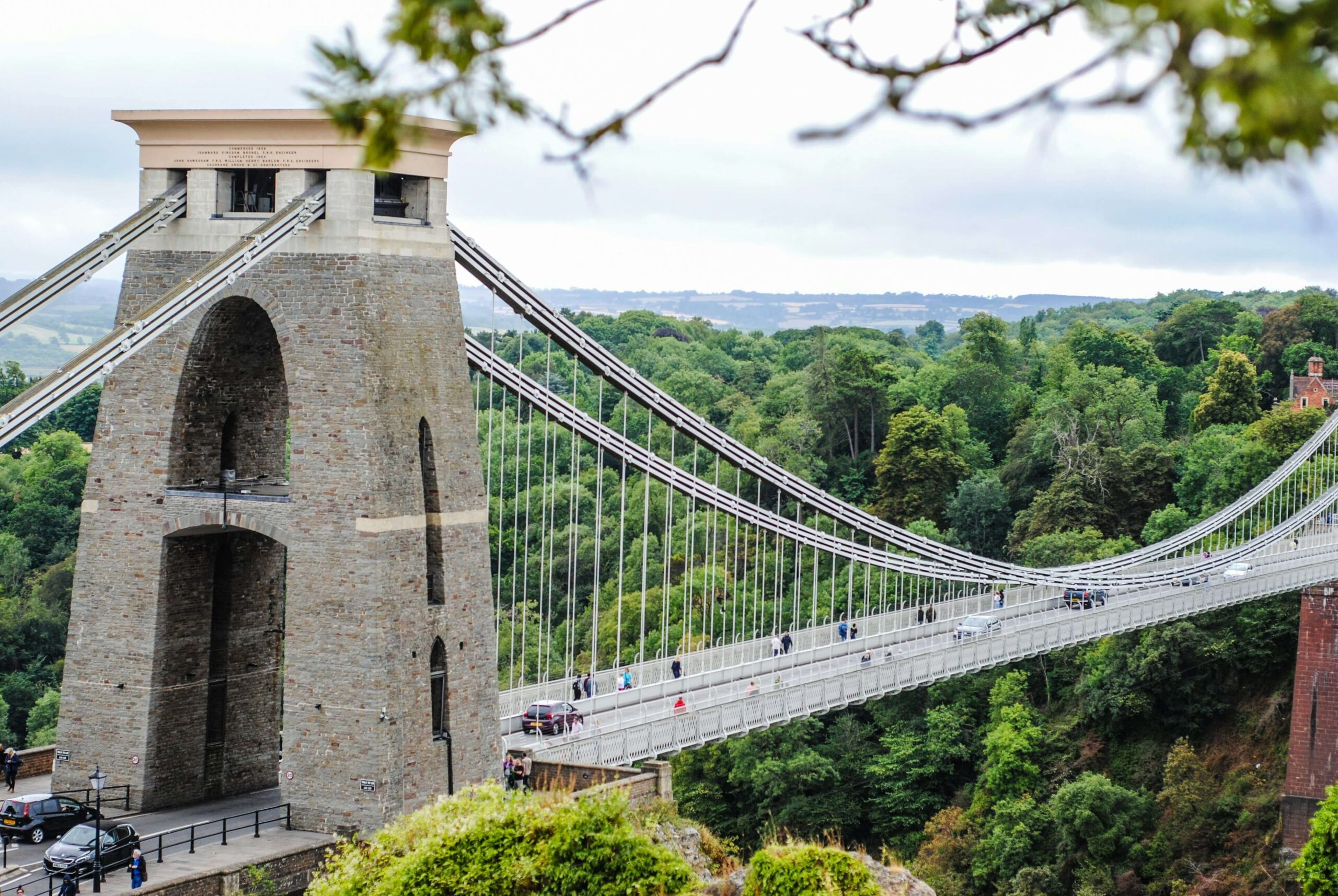The Clifton Suspension Bridge is an iconic location that offers stunning visuals and historical significance, making it a popular spot for filmmakers and video production agencies in Bristol. This guide will provide you with all the necessary information to successfully plan and execute a shoot on the bridge.

Productions shot on Clifton Bridge:
Several notable productions have utilized the Clifton Suspension Bridge, leveraging its dramatic backdrop. These include:
- Sherlock (BBC)
- The Guernsey Literary and Potato Peel Pie Society
- Broadchurch (ITV)
Key Considerations:
- Permissions and Permits: Contact the Clifton Suspension Bridge Trust to secure the necessary filming permits. Provide detailed information about your project, including dates, crew size, and equipment.
- Health and Safety: Ensure a thorough risk assessment is conducted. The bridge is a public space, and safety measures must be in place to protect both the crew and the public.
- Timing: Plan your shoot to avoid peak times. Early mornings or late evenings are ideal for reduced foot traffic and optimal lighting conditions.
- Weather: The weather can be unpredictable. Have a contingency plan for rain or high winds, which can impact filming.
- Noise: Be aware of potential noise disruptions from traffic and pedestrians.
Parking & Access:
- ParkingThere are several parking options near the bridge:
- Clifton Down Shopping Centre Car Park: A 15-minute walk from the bridge.
- West End Car Park: Approximately a 10-minute walk.
- On-Street Parking: Limited and subject to availability.
- Access:
- The bridge is accessible from both the Clifton side and Leigh Woods side.
- For heavy equipment, use trolleys or carts due to the bridge’s pedestrian nature.
Step-by-Step Guide to Filming on Clifton Bridge:
- Pre-Production Planning:
- Research and Permits: Contact the Clifton Suspension Bridge Trust at least 4-6 weeks before your intended shoot date to discuss your project and obtain the necessary permits.
- Scout the Location: Visit the bridge to determine the best angles and times for shooting.
- Securing Permissions:
- Submit a Detailed Proposal: Include the purpose of the shoot, crew size, equipment list, and filming schedule.
- Insurance: Ensure you have adequate public liability insurance.
- Logistics:
- Arrange Parking: Secure parking permits for essential vehicles and plan for the transportation of crew and equipment.
- Access Points: Identify the best access points for unloading and setting up equipment.
- Equipment Setup:
- Minimal Disruption: Set up equipment in a way that minimizes disruption to the public. Use lightweight, portable gear when possible.
- Power Supply: Plan for portable power sources as there are no on-site electrical outlets.
- Filming Day:
- Arrival: Arrive early to set up and ensure all crew members are briefed on their roles and safety protocols.
- Coordination with Authorities: Maintain communication with bridge authorities to manage any issues that arise.
- Public Interaction: Designate a team member to interact with the public and handle any inquiries or issues.
- Post-Filming:
- Tidy Up: Ensure the location is left clean and as you found it.
- Thank You Notes: Send a thank you note to the Clifton Suspension Bridge Trust and any other parties involved in facilitating your shoot.
Contacts Details:
- Clifton Suspension Bridge Trust:
- Website: Clifton Suspension Bridge Trust
- Phone: +44 117 974 4664
- Email: info@cliftonbridge.org.uk
Following this guide will help ensure your filming on the Clifton Suspension Bridge is smooth, successful, and respectful of this historic landmark. Good luck with your production!

